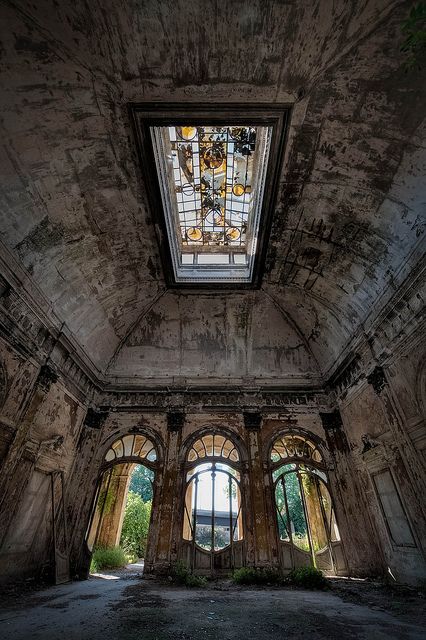Though these buildings are mostly abandoned, there is a haunting beauty that exists twixt their former state and how nature has consequently intervened. Branches tangle, and new growth emerges from the neglected spaces. Moss and mushrooms materialize, and I can almost feel the dampness of fog which has crept around the corners of each building. I contemplate what scents I would discover and my mind searches for the term to describe the peppery, forest fragrance.
"A greenhouse or glasshouse in botany, is an enclosed structure that is primarily built with with glass, plastic, or fiberglass. Its environment is controlled by warm temperatures, natural humidity and ventilation to grow plants. Greenhouses often depend upon much of the facility being heated by the sun, and in the winter months provides a safe haven for young plants by protecting them from extreme cold or heat."
The World Encyclopedia gives this fascinating explanation of how the Greenhouse came into being:
"The idea of growing plants in environmentally controlled areas has existed since at least Roman times. The cucumber was a favorite of Roman emperor Tiberius, who "was never without it" (Pliny the Elder 77 C.E. in Bostock and Riley 1855). The Roman gardeners used artificial methods (similar to the greenhouse system) of growing to have it available for his table every day of the year. Cucumbers were planted in wheeled carts, which were put in the sun daily, then taken inside to keep them warm at night under special conditions (Pliny the Elder 77 C.E.). The cucumbers were stored under frames or in cucumber houses glazed with either oiled cloth, known as "specularia," or with sheets of mica."
Images source: Pinterest
Information: World Encyclopedia, Wikipedia
Information: World Encyclopedia, Wikipedia































No comments:
Post a Comment